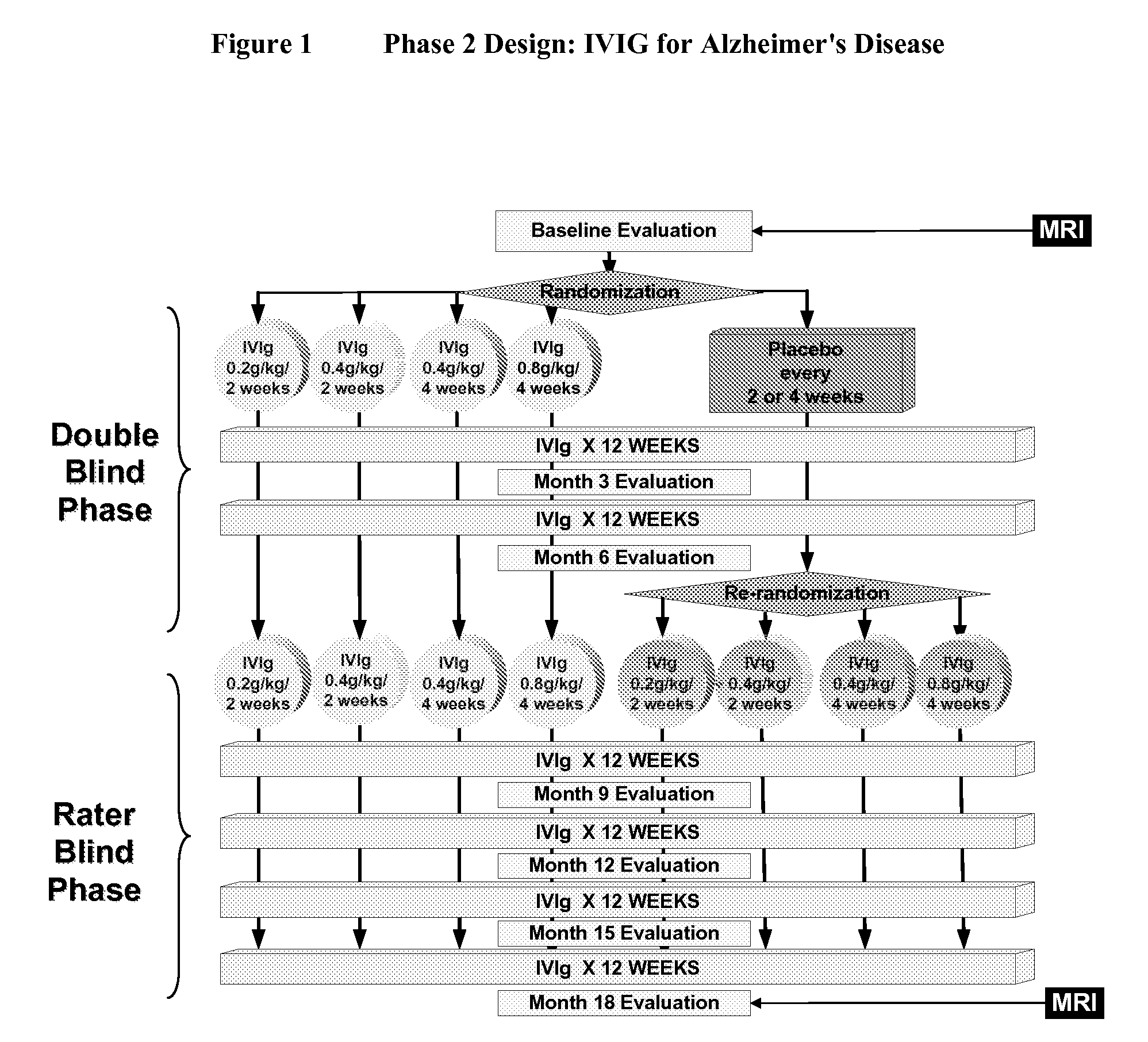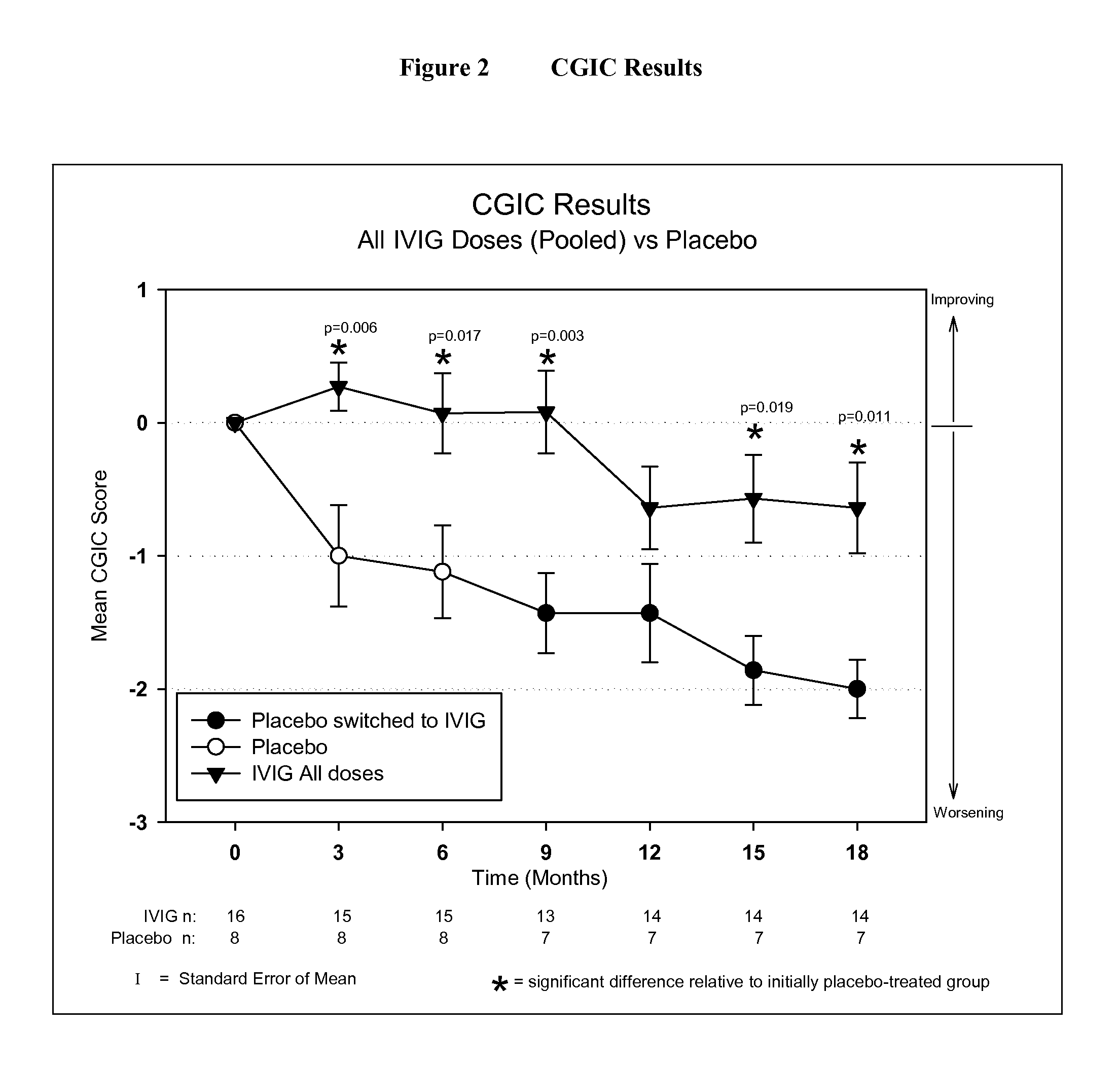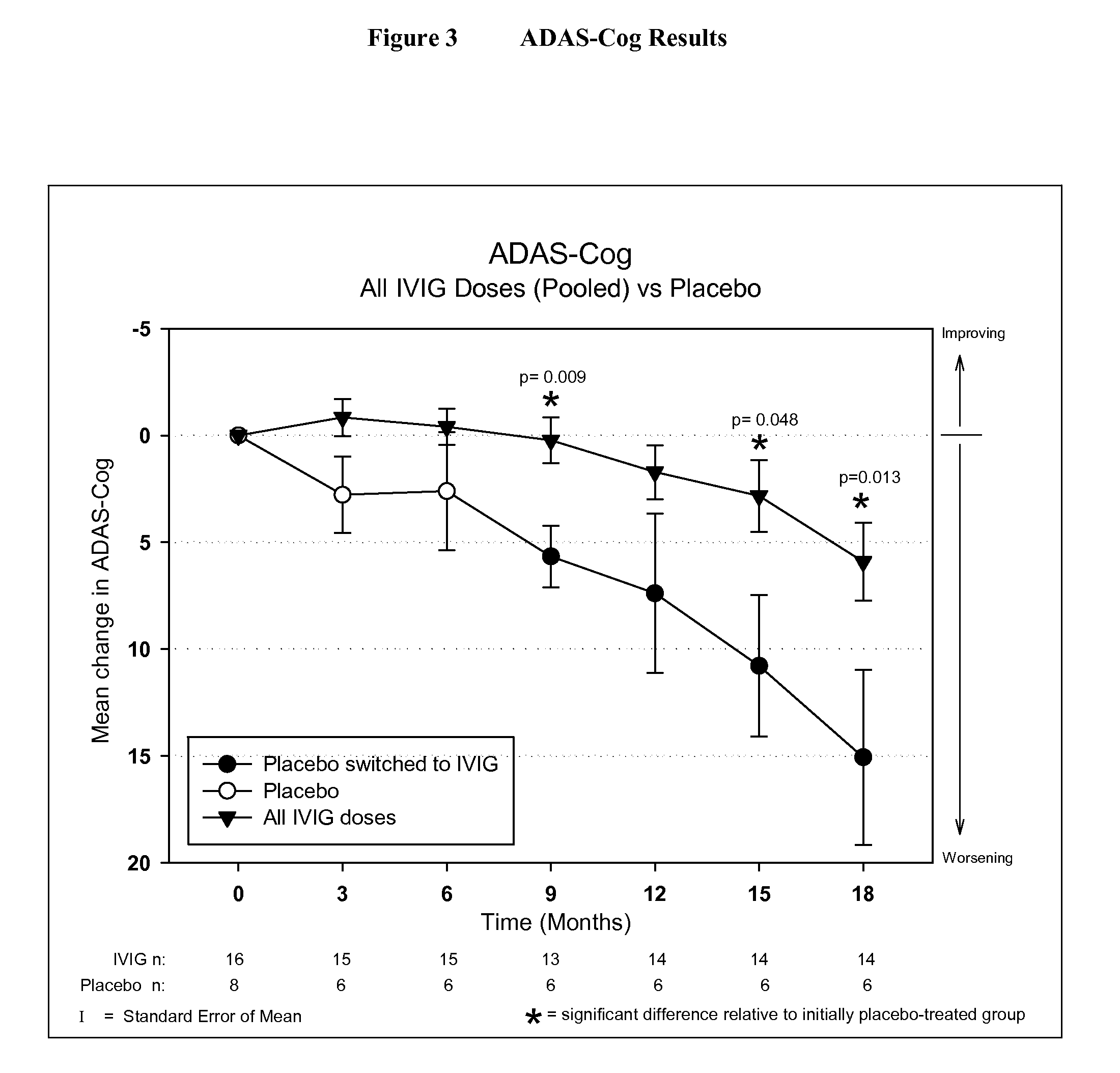Use of ventricular enlargement rate in intravenous immunoglobulin treatment of Alzheimer's disease
a technology of immunoglobulin and ventricular enlargement, which is applied in the direction of antibody medical ingredients, diagnostic recording/measuring, peptide/protein ingredients, etc., can solve the problems of neurotransmitter level reduction, neural cell death, and behavioral problems, and achieve emotional stability and behavioral problems decrease, and the effect of reducing
- Summary
- Abstract
- Description
- Claims
- Application Information
AI Technical Summary
Benefits of technology
Problems solved by technology
Method used
Image
Examples
examples
[0045]The following examples are provided by way of illustration only and not by way of limitation. Those of skill in the art will readily recognize a variety of non-critical parameters that could be changed or modified to yield essentially the same or similar results.
example i
Neuropsychological Outcomes Following 18 Months of Uninterrupted Intravenous Immunoglobulin (IVIG) Treatment in Patients with Alzheimer's Disease
[0046]IVIG Phase 2 Study Design: The study was a randomized, double-blind, placebo-controlled, parallel arm, add-on clinical trial testing safety and utility / futility of IVIG treatment for Alzheimer's Disease (AD). 24 subjects with mild to moderate AD (as determined by MMSE 14-26) participated in the trial. For the placebo group, a 6-month placebo period was controlled with a 12-month open-label extension. Primary clinical outcomes were measured by ADAS-Cog and CGIC, where a positive outcome was predefined as a difference of at least 1.7 ADAS-Cog points at 6 months in IGIV group and numeric superiority on CGIC. Secondary clinical outcomes were measured by NPI, ADCS-ADL, QOL, 3MS, and neuropyschological battery. FIG. 1 provides an outline of the study design.
[0047]Dosage range: IVIG infusion was given at the frequency of once per 2 weeks or ...
example ii
Intravenous Immunoglobulin Treatment Decreases Rates of Ventricular Enlargement and Cognitive Decline in Alzheimer's Disease
[0059]Objectives: To examine the effect of 18 months of intravenous Immunoglobulin (IVIG) treatment on ventricular enlargement rates in mild to moderate Alzheimer's disease (AD); to examine the correlation between ventricular enlargement rates and clinical outcomes in AD patients treated with IVIG.
[0060]Neuronal loss during normal aging causes brain atrophy (or shrinkage). Neuronal degeneration in Alzheimer's Disease, however, causes accelerated brain atrophy. As the human skull is a closed space, brain atrophy leads to progressive enlargement of the fluid-filled cerebral ventricles. The rate of ventricular enlargement over time provides an objective measure of the rate of Alzheimer's disease progression.
[0061]Different ventricular enlargement rates have been observed in normal, mild cognitive impairment (MCI), and Alzheimer's disease brains. It has been report...
PUM
| Property | Measurement | Unit |
|---|---|---|
| time | aaaaa | aaaaa |
| time | aaaaa | aaaaa |
| time | aaaaa | aaaaa |
Abstract
Description
Claims
Application Information
 Login to View More
Login to View More - R&D
- Intellectual Property
- Life Sciences
- Materials
- Tech Scout
- Unparalleled Data Quality
- Higher Quality Content
- 60% Fewer Hallucinations
Browse by: Latest US Patents, China's latest patents, Technical Efficacy Thesaurus, Application Domain, Technology Topic, Popular Technical Reports.
© 2025 PatSnap. All rights reserved.Legal|Privacy policy|Modern Slavery Act Transparency Statement|Sitemap|About US| Contact US: help@patsnap.com



